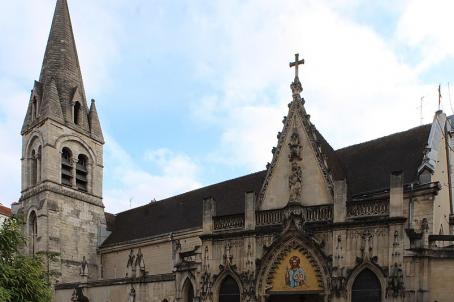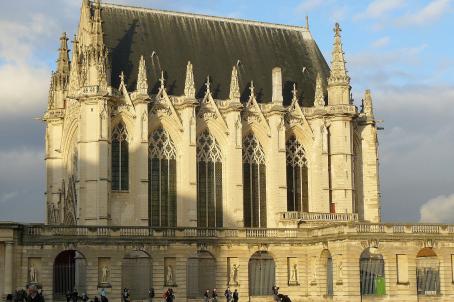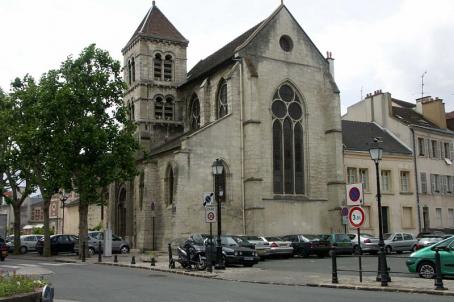Stupa Monument aux morts Cambodgiens et Laotiens

The stupa was built in 1926 to commemorate the soliders from Laos and Cambodia who died defending France in the First World War.

The stupa was built in 1926 to commemorate the soliders from Laos and Cambodia who died defending France in the First World War.

The Merovingian chapel built by Dagobert on the site of the present church was destroyed in 861. The church of Saint Saturnin was built and enlarged from the 11th to the 20th century. Classified as a historical monument in 1909, the 11th and 12th century bell tower has been restored several times. In 1794, in order to erase any vestige of religion, the horizontal arms of the cross which surmounted the bell-tower were sawn off: it is this strange metallic decoration that can be seen on the lawn in front of the church. With its 32.50m height, the bell tower would pass entirely under the nave of Notre-Dame de Paris! Beheaded by lightning in August 1942, its spire was only rebuilt identically after the war. The present porch was bought by Mrs Smith-Champion from the city of Paris and offered in 1914 after the church was enlarged. It probably comes from a Parisian convent. Flamboyant Gothic (late 14th century), it is decorated with a mosaic and surmounted by a Virgin and Child dating from 1914.

Founded in 1379, the Sainte-Chapelle, whose construction began just before the death of Charles V in 1380, was only inaugurated in 1552 during the reign of Henry II, after a very long interruption of work from the beginning of the 15th century. The college of canons was installed in February 1380. The Sainte-Chapelle de Vincennes is intended, like that of the Palais de la Cité in Paris, to house some of the relics of the Passion. In undertaking this project, Charles V wanted to make Vincennes, which was to be the second capital of the kingdom, while hanging on to the Palais de la Cité in Paris. The old traditional Parisian palace remains but, in Vincennes, in an adapted and grandiose setting strongly expressing by its quality, richness and decoration, the ideology of a triumphant monarchy, a new capital was born.

The beautiful and emblematic church of St. Nicholas, built in the 12th and 13th centuries, was listed as a historical monument in 1928 and classified as a historical monument in 1947. For centuries, it has housed "Our Lady of Miracles", a polychrome wooden statue "achéiropoïète" (i.e.: not made by human hand, and therefore miraculous), itself classified as a historical monument, whose presence in these places is attested since 1328. This statue is today the object of a pilgrimage at the beginning of December. The nave, the oldest part, is Romanesque, while the choir is in Gothic style. The whole is very harmonious, installed on the high point of the Old Saint-Maur. Place of celebrations, the church also hosts musical events thanks to its organ with its velvety sound of the 19th century, recently raised. It is the subject of guided presentations and receives many visitors all year round.